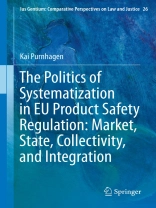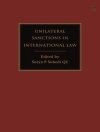This book examines the increasing role of the legal method of systematisation in European Union (EU) law. It argues that the legal method of systematisation that has been developed in a welfare-state context is increasingly used as a regulative tool to functionally integrate the market. The book uses the example of EU product regulation as a reference to illustrate the impact of systematisation on EU law. It draws conclusions from this phenomenon and redefines the current place and origin of systematisation in the EU legal system. It puts forward and demonstrates two main arguments. First, in certain sectors such as in EU product safety law, the quality of EU law changes from a sector-specific and reactive field of law to an increasingly coherent legal system at European level. Therefore, instead of punctual market intervention, it increasingly governs whole market areas. By doing so, it challenges and often fully replaces the respective welfare-based legal systems in the Member States for the benefit of the ideal of a market-driven EU legal system. Second, at European level, the ideal is in development. This illustrates the change of the function of Statecraft from nation-states to market-states.
Tabela de Conteúdo
Table of Contents.- Abbreviations.- Acknowledgements.- Introduction.- Chapter 1: Mapping the Systematization of EU Product Safety Law.- Chapter 2: Mapping Systematization in EU Law.- Chapter 3: Systematization of EU Product Safety Law – Governing the EU Market State.- Chapter 4: Systematization of EU Product Safety Law and European Primary Law.- Epilogue.- Bibliography.- Court Decisions.- Bibliography.- Court Decisions.- Bibliography.- Index.












